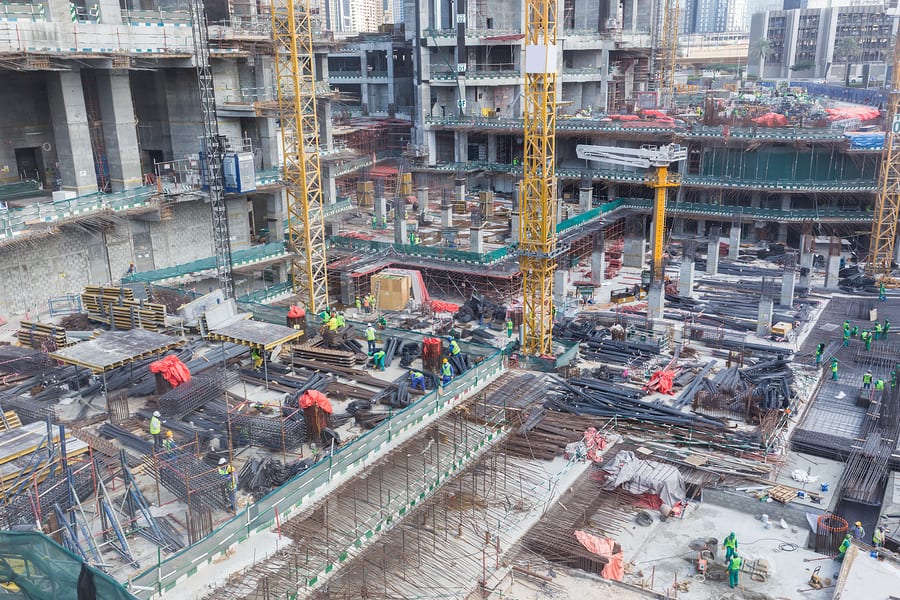By Laser 1 Technologies
Immigrant Impact on US Business
Immigration is in the news, and I expect it’s not going away. During the 2016 presidential campaign we heard a lot about a wall, and about the dangers and problems associated with immigration. However, the flip side is this: the US economy depends on these workers in a variety of ways, and the battle against illegal immigration also impacts legal immigrants.
CEOs Recommend Stable Policies
Fortune magazine published an article titled Business Leaders Warn of Immigration Policy’s ‘Substantial Harm on U.S. Competitiveness’ on August 26 about the negative impacts of changes to US immigration policy, as expressed in a letter from the CEO members of an organization called the Business Roundtable, which is “an association of chief executive officers of America’s leading companies working to promote a thriving U.S. economy and expanded opportunity for all Americans through sound public policy.”
Their concerns are that policy changes are making legal immigration and work permit status inconsistent and unpredictable, which will discourage much needed skilled workers from choosing to pursue jobs in the United States.
The article states:
Noting that changes to immigration policy are “causing considerable anxiety” for thousands of their employees, the letters signers also suggest that they threaten to “disrupt company operations.” The changes have served to create inconsistency and uncertainty, forcing employees to repeatedly renew temporary work visas and imposing “unnecessary costs and complications for American businesses.”
“In many cases,” the letter adds, “these employees studied here and received degrees from U.S. universities, often in critical STEM fields.”
The letter highlights four key areas in which employees face uncertainty: inconsistent immigration decisions, uncertainty about required information, revoked status for spouses, and commencement of removal proceedings.
Here’s how the letter concludes:
At a time when the number of job vacancies are reaching historic highs due to labor shortages, now is not the time restrict access to talent.
As the federal government undertakes its legitimate review of immigration rules, it must avoid making changes that disrupt the lives of thousands of law-abiding and skilled employees, and that inflict substantial harm on U.S. competitiveness.
In their letter, the Business Roundtable focuses on highly educated workers, but what about low-skilled workers? There are so many factors at play here that it’s a challenge to work it all out.
Immigration Dynamics Are Changing
Here’s an observation from The Brookings Institute:
Immigration to the U.S. of young, low-skilled workers will continue to slow until it reverses in 2050, regardless of U.S. policy, thanks to weak labor-supply growth in Mexico and other Latin American countries.
Instead, a bigger issue of concern for the Trump administration should be a growing number of aging, undocumented permanent residents, the authors argue. Over the course of the next 15 years, the authors calculate, the population of Latin American-born residents over age 40 in the U.S. will grow by 82 percent.
The article points out that the flood of immigrants from Mexico and Latin America has slowed for reasons that have nothing to do with regulations. Mexico’s baby boom lasted longer than the one in the US, so there was a period of economic hardship combined with surplus workers in the 80s and 90s which caused a huge influx of immigration to the US in those years. The economy in Mexico is now more stable, and those workers have aged, making them more risk-averse.
Do Immigrants Hurt Low-Wage Earners Most?
There’s an article in Politico with some very interesting points about how an immigrant workforce redistributes money away from low-wage-earners to business ownership.
Wage trends over the past half-century suggest that a 10 percent increase in the number of workers with a particular set of skills probably lowers the wage of that group by at least 3 percent. Even after the economy has fully adjusted, those skill groups that received the most immigrants will still offer lower pay relative to those that received fewer immigrants.
Both low- and high-skilled natives are affected by the influx of immigrants. But because a disproportionate percentage of immigrants have few skills, it is low-skilled American workers, including many blacks and Hispanics, who have suffered most from this wage dip. The monetary loss is sizable. The typical high school dropout earns about $25,000 annually. According to census data, immigrants admitted in the past two decades lacking a high school diploma have increased the size of the low-skilled workforce by roughly 25 percent. As a result, the earnings of this particularly vulnerable group dropped by between $800 and $1,500 each year.
A Complex Economic Question
I’m only sure of one thing: there are no simple answers. As our globalized world gets increasingly interconnected, questions around immigration will only get more complicated. We all want US companies to remain competitive and US workers to have stable jobs with decent pay. Finessing the immigrant work force is undoubtedly part of the equation, but there are very complex forces at work in the matter.




